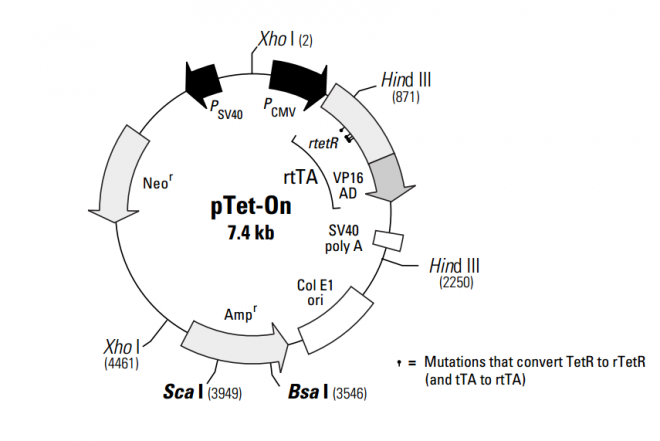pTet-On 载体
| 质粒类型: | 四环素调控系统 |
|---|---|
| 启动子: | CMV |
| 克隆方法: | 多克隆位点,限制性内切酶 |
| 载体大小: | 7400 bp (查看载体序列) |
| 载体抗性: | Ampicillin (氨苄青霉素) |
| 筛选标记: | Neomycin (新霉素) |
pTet-On® expresses the reverse tet-responsive transcriptional activator (rtTA) from the strong immediate early promoter of cytomegalovirus (PCMV). tTA is a fusion of amino acids 1–207 of the tet repressor (TetR) and the negatively charged C-terminal activation domain (130 amino acids) of the VP16 protein of herpes simplex virus. pTet-On is similar to pTet-Off except for four amino acid changes that convert the TetR to a rTetR, and consequently, tTA to rtTA. (pTet-Off also contains several silent mutations.) pTet-On was originally described as pUHD17-1neo by Gossen et al. (1995). pTet-On can be distinguished from pTet-Off by digestion with Hind III.
载体应用
The pTet-On Vector is used to develop stable Tet-On cell lines. After a vector that contains a gene under the control of a tet-responsive element (TRE) is transfected into a Tet-On cell line, the rtTA binds to the TRE, thus activating transcription in the presence of doxycycline (Dox). As Dox is removed from the culture medium, transcription from the TRE is turned off in a highly dose-dependent manner. Additional information on TRE-containing vectors and protocols describing the construction of Tet-On cell lines can be found in the Tet Systems User Manual (PT3001-1).


